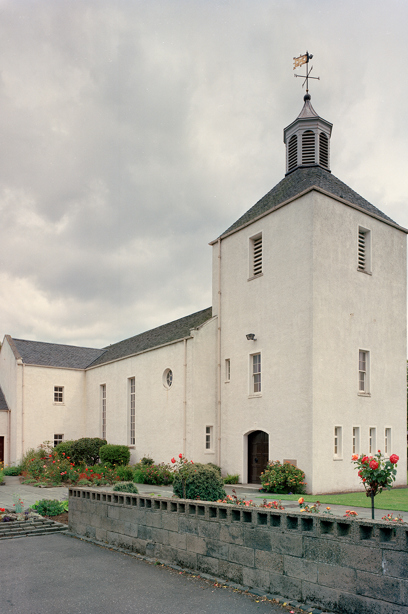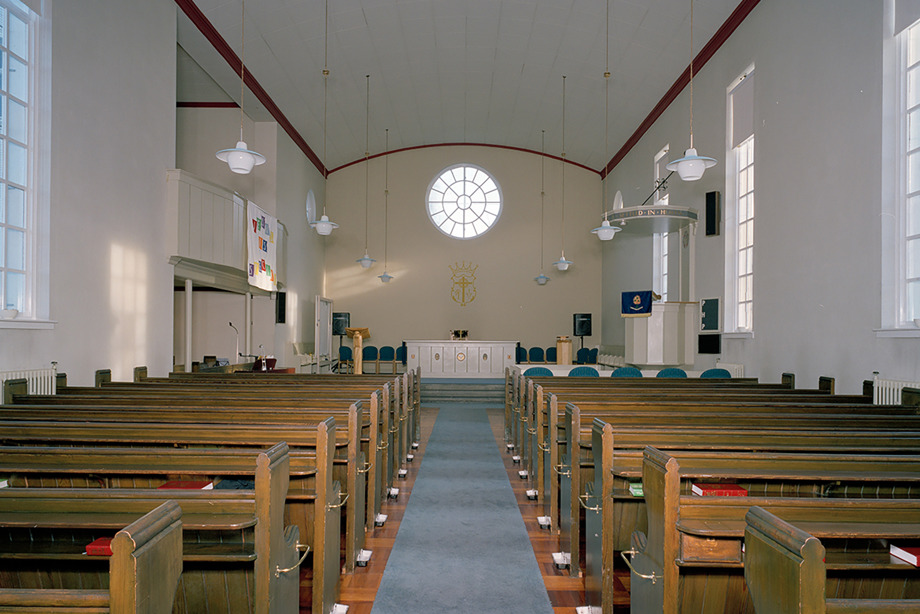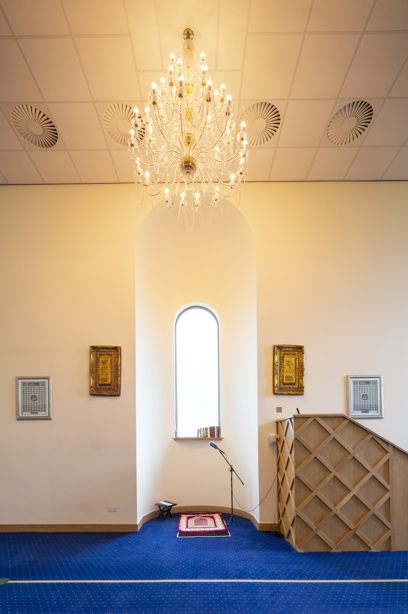With the 1929 reunification of the Church of Scotland, the pace of church construction first slowed before accelerating again during a period of reinvigoration. The latter was thanks to the post-war New Town building programme.
As for the Roman Catholic Church, the Second Vatican Council of 1962 led to a huge number of churches being constructed to accommodate a new style of worship. The buildings conservation movement was also increasingly active throughout the 20th century and resulted in the repair and restoration of a great number of historic churches of all denominations.
Over the last century, we have seen some religious communities reusing historic buildings as places for prayer. Hindu, Muslim, and Sikh communities can be found in every corner of the country, from the Scottish Borders to the Western Isles.
From the 1920s, when these communities started to become established in Scotland, former churches, synagogues, tenements, and concert halls were transformed to serve as bright centres of religion, heritage, and community.
More recently, the opportunity to build bespoke places of worship for the Muslim and Sikh communities has given Scotland its first mosques and gurdwaras.
Reid Memorial Church, Edinburgh
After centuries of fragmentation, the re-unification of Scotland’s Protestant denominations began in the early 20th century and led to the Free Church and United Presbyterian Church joining the Church of Scotland in 1929.
This was timely for the Free Church congregation looking to move out of Edinburgh’s Free High Church on the Mound in Edinburgh and find a new base. Following the reunification, this congregation was able to join that of Reid Memorial Church.
The Reid Memorial Church had been built to the highest standard of craftsmanship. This was funded using a bequest from William Reid in memory of his father, an Edinburgh businessman from whom he had inherited a fortune.
Architect, Leslie Grahame-Thomson completed the impressively scaled church in 1933 and soon after added an array of ancillary buildings including vestries, a hall, and a church officer’s house.
Samye Ling Tibetan Buddhist Centre, Dumfries and Galloway
Not only was Samye Ling the first Buddhist centre to be founded in Scotland, it was also the first Tibetan Buddhist centre to be established in the West.
Founded in 1967 and named after Tibet’s first monastery, Samye Ling offers instruction in Buddhist philosophy and meditation. The centre quickly became popular and attracted notable names among its early students, such as David Bowie and Leonard Cohen.
As well as practising Buddhism, one of the main religions of Tibet, preserving the country’s material culture and medicine has been a key part of the centre’s purpose.
Retreats and courses continue to be offered on a residential basis. Day visits are popular for those who wish to explore this important site and learn more.
Colinton Mains Church, Edinburgh
The character of a church building is inevitably influenced by the interests, and perhaps beliefs, of its architect. Ian Lindsay, for instance, was passionate about Scotland’s historic architecture and was one of the country’s earliest conservation architects.
We can see that the white harling (wall finish) and simple forms of 18th century Caithness churches inspired the external design of Colinton Mains, which opened in 1954.
It can be argued that by building the church in a traditional style he gave the church building a sense of permanence to help anchor the new housing estate of Colinton Mains that sits adjacent to it.
When it comes to the internal design and fittings of Colinton Mains - such as the pulpit - we can see design influences from the Canongate Kirk in Edinburgh, which Lindsay had previously worked on.
Park Church, Ardrossan
Scotland’s ambitious post-World War II building programme was a boon for architects. New towns (part of the New Towns programme) and housing schemes needed places of worship for different Christian denominational or faith congregations.
The Church of Scotland’s National Church Extension Programme was established to meet this challenge and they aimed to provide modern places of worship to suit these new environments.
Designed by Ayrshire architects James Houston and Son, the Park Church opened in 1958. Its steeply pitched interior produced the largest amount of space for 400 worshippers while providing a sense of grandeur at a low cost.
Mindful of practical concerns, the architects placed the church hall windows at a high level so as to minimise breakages during the recreational activities that it was anticipated would be held in the hall.
St Columba’s Church, Glenrothes
The Church of Scotland required that the churches built in the New Towns – which were being constructed in Scotland in the post-war period – to be modern in spirit while having a reassuring sense of tradition.
In the case of St Columba’s – which opened in 1961 and was one of three churches that the Church of Scotland planned for Glenrothes - its plan was primarily based on the structure of a 16th century church in nearby Burntisland; specifically, this church has an altar, pulpit, and font placed in the centre of the building.
St Columba’s was the first designed by local architects Wheeler & Sproson. Their design featured fine contemporary artwork, such as a mural across the back wall by Alberto Morrocco and Belgian stained glass windows.
St Benedict’s Roman Catholic Church, Glasgow
By the middle of the 20th century, church commissions were providing architects with a unique opportunity to experiment with different forms and materials.
The Roman Catholic Church, in particular, was keen to be forward-looking in the wake of the Second Vatican Council of 1965. That Council had sought to make the liturgy more inclusive and contribute to the renewal of the Church.
In response, Gillespie Kidd & Coia produced some strikingly original buildings and St Benedict’s was considered to be one of their best projects. Its demolition in 1991 prompted the protection of 17 churches designed by these architects through their listing by Historic Scotland, now Historic Environment Scotland.
The following year, in 1992, their monumental St. Peter’s Seminary, Cardross became the first Modernist building in Scotland to be listed Category A.
Al Maktoum Mosque, Dundee
Al Maktoum Mosque, the second purpose-built mosque in the City of Dundee, opened in 2017. As a religious centre, it welcomes the growing Muslim community of Scotland.
The mihrab, an arched niche that marks the direction of prayer, is viewed as the holiest part of the mosque.
Within the space, the prayer rug of the Imam – the person who leads prayers in a mosque – is laid beside the microphone ready for them to conduct the call to prayer.
To the right is the minbar, where we can see a pulpit from which the khutbah (sermon) and prayers are delivered. The Imam recites from the second step because the top step is reserved for the Prophet.
Places for Prayer continued
Explore, through incredible arts and craft, church decoration that make Scotland's places for prayer some of the most beautiful buildings in the country.





















